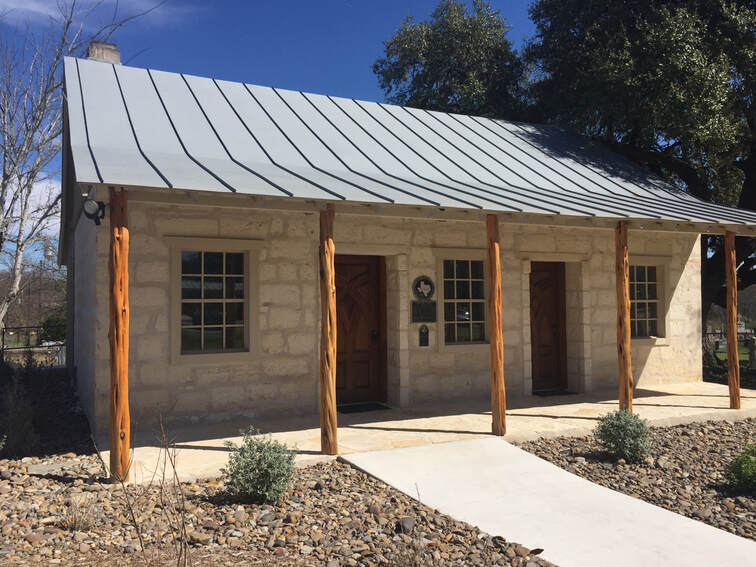The Adoration Chapel
In 2016, the old Convent/School/Museum was remodeled to serve as an Adoration Chapel. Eucharistic Perpetual Adoration, a long held devotion of the Catholic Church, allows adorers to pray in the presence of the living God. St. Stanislaus Parishioners have carried on this tradition in the parish since November 1999. All are welcome to worship in the chapel 24 hours a day.

The focal point of the chapel is the monstrance, which resides at the front of the room, and contains the Body of Christ. The interior design is simple and clean, so as to intensify the focus on the worship of Christ.
There are various symbolisms worth noticing in the transformation of this 1876 pioneer-era convent ...
Blue Walls – are in honor of Mary; blue is the color most often used to depict her robe and/or veil.
Limestone – The use of limestone rock connects the interior of the chapel to its exterior. The large piece of limestone at the base of the altar can remind adorers of the Bible verse:
… and upon this rock I will build my church … ~Matthew 16:18
The limestone pavers on the walls are mortared with powder saved from the shaping of the stones so as to cure them back into a single form – a metaphor for the One Church built by God.
I pray … so that they may all be one. ~John 17:20-21
The color of the limestone mirrors the wainscoting in the main church. The use of limestone can also remind us of Jesus’ burial and resurrection. It is widely asserted that his tomb/place of resurrection had been carved out of limestone.

Three Rocks – behind the monstrance symbolize the Holy Trinity.
Glass – the three layers could suggest the Holy Trinity. In addition, the glass can nudge us to recall a passage in the Book of Revelation describing a vision of God enthroned: In front of the throne was something that resembled a sea of glass like crystal. ~Revelation 4:6
Stained Glass Windows – represent elements of the Holy Eucharist and the Divine Mercy of Jesus.
